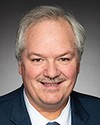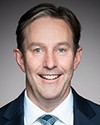Thank you very much, Mr. Casey and members of the committee, for the opportunity to comment on the draft Canadian task force breast cancer screening guidelines.
As a breast imaging specialist, I diagnose women along their entire cancer journey. I detect breast cancers through screening or diagnose them after a woman presents with a symptom of a palpable lump. I perform biopsies and I localize breast cancers for the surgeons. I interpret the imaging of women diagnosed with late-stage or recurrent breast cancer. I speak to women at all stages of breast cancer. A screen-detected cancer found before symptoms occur is a very different diagnosis from one found because of symptoms at stages 2 or 3, or when it's incurable, at stage 4.
The task force falsely equates an additional imaging test as a harm comparable to a delayed diagnosis of late-stage breast cancer. My patients attest that the severity of the harm of a delayed diagnosis vastly exceeds any stress associated with any additional imaging test. Equating these harms is a false equivalency.
The recent draft guidelines released by the task force for breast cancer screening have sparked significant concern within the medical community. As an expert included on the evidence review panel, I find their recommendations profoundly disappointing. These guidelines ignore robust and recent evidence supporting the initiation of screening at age 40, a standard now adopted in the United States and numerous other countries.
The task force recommendations are anchored in studies dating back 40 to 60 years, utilizing obsolete technologies like film-screen mammography. As experts, we recommended against including these outdated data, which overlook monumental advances in breast cancer treatment, including hormone receptor-positive treatments like tamoxifen, less invasive surgical options like lumpectomy and sentinel lymph node biopsy, and modern immunological and chemotherapeutic agents that have revolutionized breast cancer management. The task force working group interfered with our expert recommendations and insisted on using these studies.
The task force approach diminished the importance of recent observational studies, involving millions of women, comparing screening to no screening with updated diagnosis and treatment. These studies include one Canadian study of over 2.7 million women screened over 20 years, which demonstrated a 44% reduction in breast cancer mortality in women who began screening in their forties. Similar studies in Sweden show even greater benefits, with reductions in mortality of 50% to 60% in women aged 40 years and older.
Furthermore, the task force used the old trials to evaluate cancer stage at detection and therefore missed the benefits of early-stage detection with up-to-date screening technology. The improvements in screening technology in the past 15 years have improved breast cancer detection by 20% to 40%.
Breast cancer is a devastating diagnosis, but the harms are mostly preventable when it is detected early. The survival rates are starkly different across stages—a nearly 100% five-year survival rate for stage 1 detected through screening as compared with only a 22% five-year survival rate at stage 4, when the disease has become incurable. Furthermore, the treatment is much less intensive and costly when treated early. Stage 1 cancer costs an average of $30,000 Canadian to treat, as compared with up to $500,000 for stage 4. Systematic screening programs in Canada find that 87% of breast cancers are stage 1 at diagnosis.
The task force disregarded data that showed women of a race or ethnicity other than white are more likely to be diagnosed with breast cancer in their forties. A one-size-fits-all approach to recommending screening only starting at 50 discriminates against these women and contributes to their twice-higher rates of advanced breast cancer due to delays in screening, access to screening and delays in diagnosis.
The task force acknowledged that women with dense breasts were twice as likely to develop breast cancer as women with non-dense breasts. However, it failed to recognize the reduced sensitivity of mammography in these women, which drops from 90% in women with non-dense breasts to 60% in those with the densest breasts. The task force ignored high-quality randomized studies that showed adding screening with MRI reduced interval cancers—cancers diagnosed by symptoms after a normal mammogram—by 80% and by 50% in women screened with supplemental breast ultrasound. These have been shown to be evidence-based acceptable surrogates for breast cancer mortality, but the task force did not consider them despite an expert recommendation.
We must demand that our health policies be reflective of the latest scientific evidence and best practices in medicine.
Thank you very much for your attention.




